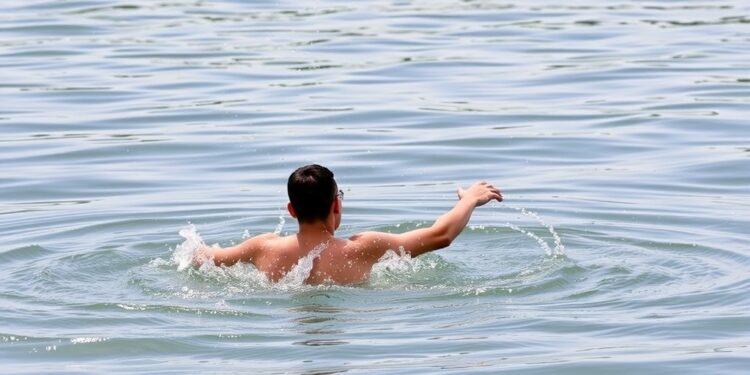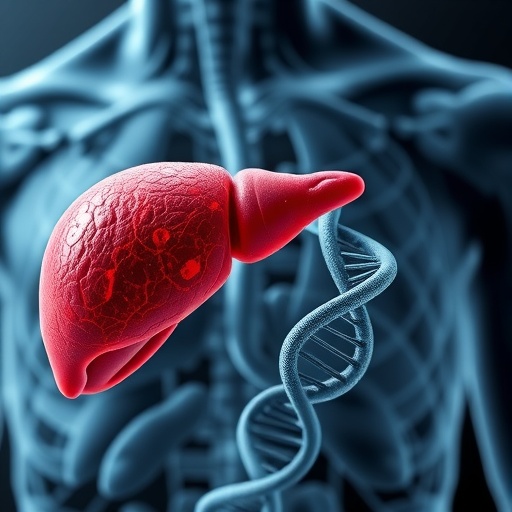
Legionella Infection: A Hidden Risk of Open Water Swimming
Swimming in natural lakes and open water bodies offers a unique adventure, bringing people closer to nature and providing a refreshing escape from the heat. However, amidst the thrill of gliding through tranquil waters, a lurking threat may go unnoticed—Legionella, a bacteria responsible for causing severe pneumonia, can inhabit these environments. This revelation has recently gained attention from health professionals, particularly in light of a case study published in the Canadian Medical Association Journal, highlighting the potential health risks associated with this common pastime.
Legionella, while typically associated with man-made water systems, can also find a home in various natural water bodies. The bacteria thrive under specific conditions, primarily warm, stagnant water, making lakes, rivers, and even hot tubs potential breeding grounds. The implications of exposure can be dire, as Legionella infection, commonly referred to as legionnaires’ disease, can manifest as a serious form of community-acquired pneumonia. Symptoms such as fever, fatigue, respiratory problems, and even gastrointestinal distress can surface, compounding the risk for certain vulnerable populations.
Importantly, the risk of contracting legionnaires’ disease is increased among individuals with preexisting conditions. Those over the age of 50, individuals with smoking histories, chronic heart or kidney problems, diabetes, and those with compromised immune systems are at heightened risk. As such, the interplay between natural recreational activities and health vulnerabilities poses significant challenges for public health awareness and intervention strategies.
The recent case study mentioned paints a vivid picture, recounting the experience of a 77-year-old man who sought adventure in Iowa’s natural lake waters. After his swim, the patient experienced a troubling combination of weakness, fever, cough, and episodes of sudden falls. Initially evaluated in an emergency department, his condition prompted speculation surrounding legionnaires’ disease, particularly after standard antibiotics failed to yield improvement.
This case underscores the necessity for healthcare professionals to remain vigilant and consider legionnaires’ disease within differential diagnoses, especially when treating patients who present with pneumonia unresponsive to the usual antimicrobial treatments. The challenge lies not only in recognizing the threat but also in understanding the underlying clinical landscape marked by atypical pneumonia presentations.
Healthcare providers are encouraged to maintain a high index of suspicion for Legionella infection, particularly in light of the patient’s recent history of swimming in natural water. Recognizing the potential for the bacteria to spread through natural bodies of water reminds both providers and the public of the risks associated with such recreational activities. Improved outreach, education, and awareness could empower swimmers to make informed decisions about their health, thereby reducing the frequency of such infections.
The rarity of reported cases—typically fewer than 100 annually—is misleading, as the complexity of diagnosing legionnaires’ disease often leads to underreporting. Symptoms frequently mimic other forms of pneumonia, complicating the diagnostic process and potentially resulting in mismanagement of cases. Hence, consideration of recent travel history and exposure activities becomes paramount in guiding appropriate clinical evaluation and treatment decisions.
As the trend of open water swimming continues to gain popularity, it becomes increasingly vital to prioritize research into Legionella and its associated health risks. Understanding transmission pathways and infection risk factors can inform both healthcare policies and swimming safety initiatives targeted at at-risk populations. Furthermore, ongoing public health campaigns can play a significant role in minimizing instances of legionnaires’ disease, ultimately leading to safer recreational practices.
In the context of an aging population, the intersection of public health, recreational swimming, and microbial infections such as Legionella merits further exploration. Comprehensive educational initiatives aimed at both health professionals and the general public can facilitate a deeper understanding of the risks and preventive measures available to mitigate exposure to harmful pathogens in natural water bodies.
In conclusion, while swimming remains an enjoyable and invigorating outdoor activity, it is essential to acknowledge and address the underlying health risks posed by Legionella infection. Increasing awareness about the potential dangers of swimming in lakes and rivers, recognizing at-risk populations, and promoting vigilance within the medical community are critical steps needed to reduce the incidence of legionnaires’ disease. By fostering a collaborative approach that encompasses public health education, healthcare provider training, and ongoing research, we can strive towards a safer recreational environment that preserves the joy of swimming while protecting public health.
Subject of Research:
Article Title: Legionnaires’ disease following lake swimming in Iowa
News Publication Date: 18-Feb-2025
Web References: https://www.cmaj.ca/lookup/doi/10.1503/cmaj.241086
References: 10.1503/cmaj.241086
Image Credits:
Keywords: Legionella, legionnaires’ disease, pneumonia, public health, swimming, natural water bodies, infectious diseases, aging populations.
Tags: community-acquired pneumonia awarenessenvironmental factors for Legionella growthhealth risks of natural swimmingLegionella bacteria in lakesLegionella infection symptomsLegionnaires’ disease riskopen water swimming safetyoutdoor swimming health hazardspneumonia from lake exposureswimming in natural water bodiesvulnerable populations and legionnaires’ diseasewaterborne disease prevention





